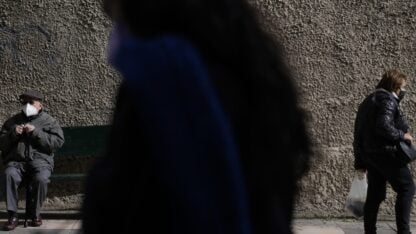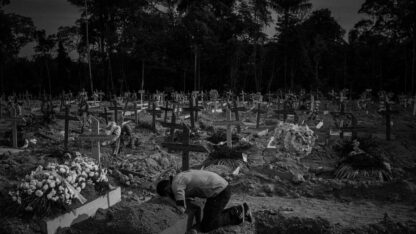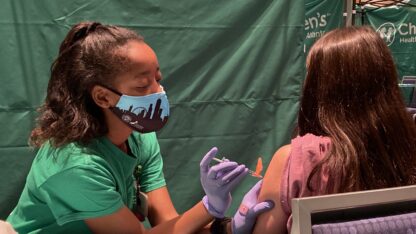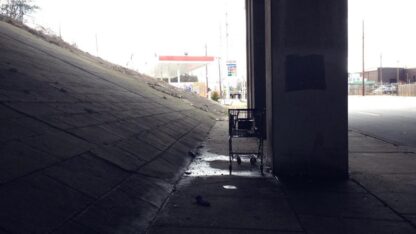Contact tracers face a number of obstacles. One is limited cooperation from the public, because some people fear being stigmatized about their viral status. There are also technical difficulties to deal with. But among the biggest problems are the sheer number of cases, and the frustrating lag time in getting COVID-19 test results from labs.
Dr. Tom Frieden, former director of the CDC, largely agrees that it is impossible to do meaningful or substantial contact tracing with huge numbers of cases, the New York Times reported. He noted that when testing results lag as much as they have, it becomes almost impossible to keep up with the high volume of infected individuals and those who have been in contact with them.
“At some point when your cases are very high, you have to dial back your testing and contact tracing,” said Frieden. “We may be in that situation in some parts of the country today.”
Covid Exit Strategy, in judging states on whether contact tracing is possible, lists Georgia as “Extremely Unlikely,” citing its high rate of positive cases among tests, at 13.2 percent.
A time-consuming job
While the term “contact tracing” has received increased media attention amid the pandemic, the concept is not new. It has been used for years to stop the spread of diseases like tuberculosis, measles and STDs.
Contact tracing involves teamwork between two types of employees from the Georgia Department of Public Health: case investigators and contact tracers.
First, a case investigator calls a person diagnosed with COVID-19, asking about the places where the person has been recently and about the individuals with whom the person has had prolonged, close contact — about 15 minutes of close contact.
Contact tracers then reach out to the people who have interacted with the sick person, and inform them that they may have been exposed to the virus. These people are advised to get tested, potentially self-quarantine and monitor any symptoms.
Bari said people who have been exposed to COVID-19 can enroll in the Department of Public Health’s symptom monitoring program if they wish. They’ll select how they prefer to be contacted, and contact tracers like Bari will reach out to them periodically to ensure they’re not experiencing symptoms.
If people who were exposed notice any symptoms, she said, they should contact their health department. If the symptoms are severe, she advises them to go to the emergency room. Tracers also offer resources, like providing nearby places to get tested and answering basic questions.
Bari said that in addition to being a fulfilling job, contact tracing has been a great learning experience for her as a student.
“I’ve had a lot of contacts that I’ve talked to who have just been very thankful someone is calling just to make sure they’re doing OK,” Bari said. “The wonderful feedback that we get makes this job more worthwhile, because we know we’re making a difference in these people’s lives.”
Glen Nowak, the director of the Grady College Center for Health and Risk Communication at UGA, said Georgia’s communication with the public regarding the COVID-19 pandemic has been “inconsistent,” as different messages have come from different groups and people in power. While the state health department recommends one thing, local health departments have other suggestions.
For instance, he noted, cities such as Athens, Savannah and Atlanta have mask mandates that go beyond state directives from Gov. Brian Kemp.
“The governor has been offering his recommendations and . . . they’re not the same as what mayors are doing. He’s advocating for masks and at the same time, he’s not requiring masks and that probably is confusing for some people,” Nowak said.
Confusion also stems from a public misconception about contact tracing. Many people believe the tracers need to know every person an infected individual has encountered, but that’s not true. They are looking only for those who have had close, prolonged contact with the person.
“Many people think that you’re expected to identify every possible person that you’ve had contact with and as a result, I think that sometimes intimidates people,” Nowak said.
Cooperation isn’t guaranteed
For contact tracing to work effectively, it requires cooperation from everyone involved, but especially from the person who’s infected with COVID-19, Nowak said.
“That seems obvious, but there are instances where people refuse to cooperate,” Nowak said. “In some places, they’ve actually had to get subpoenas to cooperate, and that’s for COVID-19.”
Although Bari said many people do cooperate to some extent, it can be a challenge to get them to enroll in a symptom monitoring program. A person’s refusal to take part could be linked to the stigma that often comes with a COVID-19 diagnosis.
“People are afraid of being stigmatized — thinking that they did something wrong, otherwise they wouldn’t have gotten infected,” Nowak said. “There’s a reluctance among people to share those contacts, because of that. I think they’re also thinking — either consciously or subconsciously — that they’ll get blamed.”
Calls make some people suspicious
Perhaps an obstacle more specific to the 21st century is the public fear of “spam” calls. Bari said it can be tough sometimes to convince the people on the other end of the line that the call is from someone with the Department of Public Health, and not from a con artist.
She noted that she and her colleagues follow strict guidelines and don’t seek inappropriate information.
“Contact tracers will never ask you for personal information . . . for example, your Social Security number or bank account information. We will never call and ask for that,” Bari said. “If someone is asking that information, that’s a scam.”
Megan Bramlett, a UGA doctoral student in the epidemiology department who’s recently been studying COVID, has experience assisting with contact tracing. Bramlett worked with an organization that conducted contact tracing for tuberculosis and STIs, primarily within homeless and transitional populations.
A key difference between her experience and how contact tracing for COVID-19 is done is the methodology. Contact tracing for other diseases is often done in person, Bramlett said.
“When it’s face-to-face, and you have a badge and you can look someone in the eye, it’s significantly easier,” Bramlett said. “Even if people believe you, oftentimes people are still skeptical and wary of sharing information.”
And with any technology come technical difficulties. Bari said the online system she and other contact tracers rely on can sometimes fail. Because the contacts are on an online database, when that system is down, tracers can’t call people to let them know they’ve been exposed.
“If there’s a lag from the system, then we’re not able to contact them as quickly as we would want to. However, that’s just like technical software issues,” Bari said. “I’ve heard it’s a really huge system that stores a lot of databases, and I’m wondering if it’s down because of how many contacts have been enrolled.”
According to the Department of Public Health, more than 99,000 contacts have been called by contact tracers like Bari since the agency began contact tracing.
The need to improve testing
Contact tracing works best with rapid results from a COVID-19 test. However, rapid results aren’t always possible. The amount of time it takes to get results from a COVID-19 viral test depends on the laboratory that’s testing the sample. The wait can be a few days or even longer.
For contact tracing to be most effective, test results need to come back in about 24 hours, Nowak said.
“If somebody goes and gets a COVID-19 test, say, at 2 o’clock this afternoon and they learn the results of that test by 3 o’clock or 4 o’clock this afternoon, that enables contract tracing to work better,” Nowak said.
Because contact tracing is so labor-intensive, it can be difficult to employ enough folks to do it, Nowak said.
Researchers found that shortening the wait for test results is the most critical aspect to improving the effectiveness of contact tracing, according to a July study published in The Lancet. The study also noted that other factors make contact tracing less effective, such as large numbers of infected people who are undiagnosed or have no symptoms, as well as the fact that some contacts are untraceable.
“People think it’s easy to do, and it can be done quickly. It’s hard work. It takes time, it takes resources,” Nowak said. “If there are a lot of people who are testing positive, it’s almost impossible to use it well, because what happens is you don’t have enough contact tracers.”
In circumstances like that, instead of having a contact tracer do it, doctors will tell the person who received a COVID-19 diagnosis to contact people they’ve been in close, prolonged contact with. Nowak said he’s heard a number of people in the medical community say it’s proved to be helpful in communities inundated with COVID-19 cases.
“I think the biggest thing is that contact tracing becomes less useful — harder to do — if there are a lot of people who are infected in a community. I think that that sort of gets lost,” Nowak said.
But even with the challenges, Bari said she believes in the effectiveness of contact tracing.
“It’s important to be able to give out information that’s accurate,” Bari said. “Being able to let everyone know the importance of monitoring your symptoms and quarantining so you don’t potentially expose someone else. Just the importance of being as careful as you can during this time.”
Bramlett agrees on contact tracing’s effectiveness, but said timing is everything.
“It can be the difference between a community recovering and a community being inundated,” Bramlett said. “I think it can quite literally be the difference between life or death in some instances. . . . You don’t know by staying home, how many lives you’re saving.”
Madeline Laguaite is a freelance journalist and a health and medical journalism graduate student at the University of Georgia. She is particularly interested in LGBTQ health and public health. She has a public/professional Twitter at @MLaguaite and a portfolio at www.madelinelaguaite.com.










